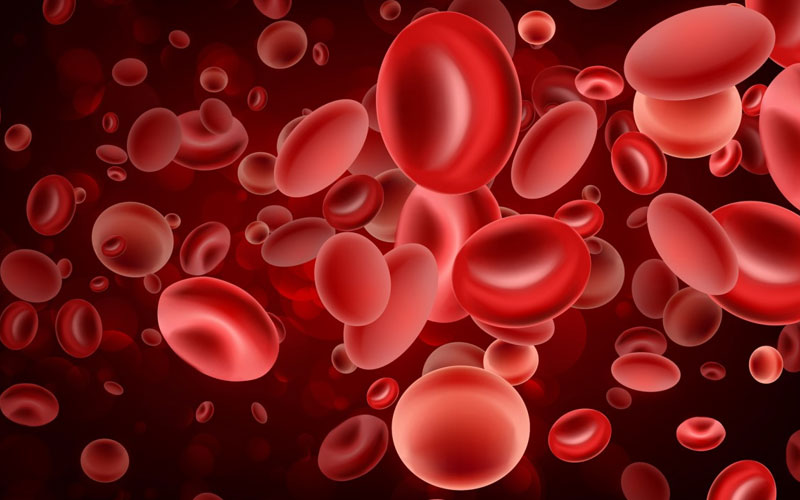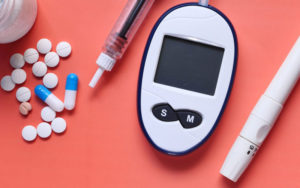Iron Deficiency: Causes, Effects, and Treatments
Iron deficiency, a specific type of anemia, is an issue that many people seek treatment for each year. There are several types of anemia, of which iron-deficiency is the most common. Iron is an important mineral in the body that serves as a building block for cell development. Iron is also necessary to form hemoglobin, the oxygen-carrying component of red blood cells. When a person has iron deficiency anemia, the blood hemoglobin levels go down, and not as much oxygen is carried in the bloodstream.
So, what does this mean for the person who is iron deficient? Well, people with mild or moderate anemia might not have any symptoms or even know they have this condition. However, when a person becomes significantly deficient in iron, symptoms like weakness, shortness of breath, and pale complexion can occur, among others.
Causes and Effects
Iron deficiency can be caused by several things – but it is always one of three processes.
Either the body is:
- Not taking in enough iron in the form of nutrition
- Cannot process the iron correctly, or
- Losing iron in some way.
Eating an iron-rich diet in order to supply plenty of nutrition is important for all people. Some age groups need more iron than others – such as growing teens, and pregnant or lactating women. Women in general need more iron to supply their body through menstruation.
According to the American Red Cross, iron is found in both animal and plant foods. Animal-based iron found in meat, fish, and poultry products is easier to absorb by the body, at a rate of about 30%. Plant-based iron sources from vegetables, fruits, and nuts or seeds are still important, but are not as readily absorbed – with a rate of about 2 to 10% absorption. For maximum absorption of both – it is good to eat them at the same time!
*Another iron absorption tip– eating high Vitamin-C foods promote better absorption as well. For example, eating your iron-containing food or supplement with citrus fruit, red or orange peppers, or tomatoes can maximize the effectiveness to your body.
What Foods are High in Iron?
There are certainly others out there, but the table below shows a good variety of readily available food sources for iron.
There are sure to be some that suit your tastes! For example, a spinach salad with grilled chicken and sliced strawberries would be a delicious way to satisfy your meat and plant-based iron requirements and get maximum absorption. Add on some citrus for an even bigger boost!
| Meat and Eggs | Beef, Lamb, Pork, Turkey, Chicken, Seafood, Organ meats, any type of eggs. |
| Seafood | Shellfish, Tuna, Sardines, Haddock, Mackerel |
| Vegetables | Spinach, Peas, Broccoli, Leafy greens (all types), Beets |
| Bread and Grains | Enriched breads, pastas, and rice. Whole grain cereals |
| Fruit | Dates and Figs, Raisins, Prunes, Dried apricots or peaches, Strawberries |
| Other | Beans and Lentils, Tofu, Molasses, Maple Syrup |
Another cause of iron-deficiency is blood loss. Many people who become anemic this way may not even realize that they are losing blood – it can be a very gradual process. Because blood contains red blood cells and hemoglobin, losing it forces the body to try to replace it. If there is not enough iron to replace what is lost, then anemia occurs.
Blood loss can come from a steady loss through a gastrointestinal issue like an ulcer, a hiatal hernia, or colon polyps. Without specifically testing the stool, many people may not realize that they are losing blood. Furthermore, the anemia might not be found until it is quite severe, and symptoms appear.
Women are also particularly susceptible to iron deficiency anemia during menstruation, pregnancy, and lactation. All of these processes place extra blood and nutritional demands on the body, requiring extra nutrition and dietary intake to supplement. Many women benefit from iron supplements, and iron is a primary ingredient in prenatal vitamins.
Treatments
Treatment options will vary from person to person, depending upon their specific needs and the source of their iron deficiency. However, there are some general guidelines we can look at. Beyond treatment, it is also important to treat the CAUSE of the iron deficiency, or the person may find themselves in a cycle of treatment without having adequate iron stores to become well.
Oral Iron Supplements
These iron pills come in several forms, both over the counter and prescription. They may simply be marketed as “Iron”, or under the names “ferrous sulfate” – which is the scientific name, or the symbol “Fe”. It is important that you have your iron levels tested regularly under your provider’s supervision when taking iron supplements.
While eating a high-iron diet can help, some people cannot sufficiently treat their iron deficiency through diet alone. Supplements are a way to get results more quickly than through diet alone and are often the first-line treatment for basic iron-deficiency anemia. Some types of patients that benefit from oral iron supplements (pills) are:
- Pregnant women
- Infants and younger children
- Women experiencing heavy menstruation.
- Frequent blood donors
- Cancer patients
- Patients with GI disorders such as ulcerative colitis or Crohn’s
- People who have undergone gastric surgery
- Vegetarians/vegans
- People with blood disorders
When taking iron supplements, it is important to be aware of possible side effects. These can include:
- Constipation
- Dark colored stools
- Stomach discomfort
- Nausea/vomiting
To minimize these side effects, it is helpful to take the iron on a full stomach, and with some citrus, such as orange juice, for better absorption. It is also wise to take a stool softener tablet (OTC) daily with your iron if you experience constipation. The best advice is to pay attention to your body – your anemia symptoms, your side effects from iron, and try to balance and manage side effects while your anemia improves. Maximizing dietary iron intake will help you improve more quickly and help you to not need supplements for longer than necessary.
Intravenous Iron Infusions
Like oral iron supplements, iron infusions are often called ferrous sulfate or Fe. This route is a more direct way to get iron into the body quickly, and is always administered under medical supervision, or in a hospital. The intravenous route is more expedient and is used for those that cannot take oral supplements or who have severe deficiency and need the iron quickly.
The intravenous supplement carries with it more risks than the oral supplement does, and it is important to be aware of those. In the procedure, an intravenous line is established by a nurse or other qualified person, and the infusion is given over a period of time – sometimes up to several hours. Side effects can include:
- Dizziness/faintness
- Nausea/vomiting/cramping
- Rash
- Low blood pressure
- Chest pain
- Anaphylaxis (allergic reaction)
Because of the potential side effects, iron infusions are always given in a supervised medical setting, and in divided doses – sometimes over several weeks, until iron levels are maintained at a beneficial level.
Red Blood Cell Transfusions
Because people who are suffering from iron-deficiency anemia can’t make enough red blood cells or hemoglobin, one treatment is to do a blood transfusion. Infusing blood-type compatible red blood cells gives the body an immediate oxygen-carrying boost and provides fast relief of symptoms. Patients who have critically low levels and lots of symptoms may need this treatment, as well as those that are battling other illnesses and need the immediate benefits of a transfusion.
Blood is received from donors at community blood drives and blood centers and is carefully screened and crossmatched for infusion.
Because of blood-borne illnesses, a blood transfusion – no matter how carefully screened – delivers some risk of contracting an illness, although exceedingly rare with current technology. The patient will be informed of the risks and side effects prior to treatment and will be asked to sign a consent form.
Other risks and side-effects are:
Allergic reactions – sometimes receiving a foreign substance into the body, even though it is matched to blood type, can cause a reaction. Symptoms include hives, itching, and in extreme cases anaphylaxis. Most of the time these symptoms can be controlled with medications.
Fever – it is fairly common to develop a fever after a transfusion. It is the body’s response to some of the blood components, like white blood cells in the transfusion. This is usually a mild symptom that goes away but should be monitored carefully.
Hemolytic reaction – this occurs when a patient’s body attacks the transfusing red blood cells. If a transfusion with a mismatch of blood types is given inadvertently, this would be the result. This can be extremely dangerous, even deadly. Because of this, infusion centers and hospitals have detailed protocols of double and triple checks and crossmatches before administering blood products.
Blood transfusions these days are very safe, with a minute possibility of reaction. They are also managed in a medical setting with trained staff. For severe anemia with health-damaging symptoms, this avenue of treatment is immensely helpful to alleviate symptoms while tests are conducted to find out the root cause. Patients often feel better immediately, with a restoration of energy, no more shortness of breath, and better overall color.
In conclusion, iron-deficiency anemia is very treatable, and in some cases preventable through good diet with a variety of plant and animal-based foods. Those with special dietary needs may need to pay special attention to eating extra iron-containing foods. Higher risk groups, such as pregnant and heavily menstruating women should also pay attention to symptoms, diet, and possibly supplementation. Mild and some moderate anemia can be remedied through oral supplements. Intravenous iron is available as well for those that can’t take oral iron, or those that have a more severe deficiency. As a rapid and effective treatment for severe anemia, red blood cell infusions from donor blood are used to provide relief of symptoms while the cause of anemia is treated.

